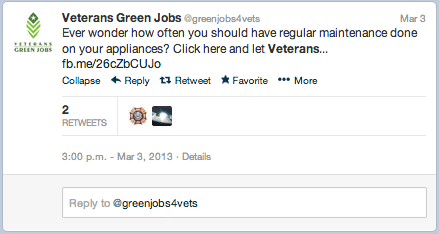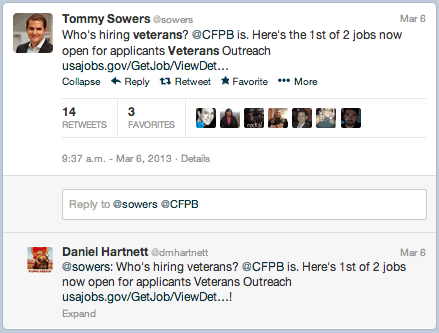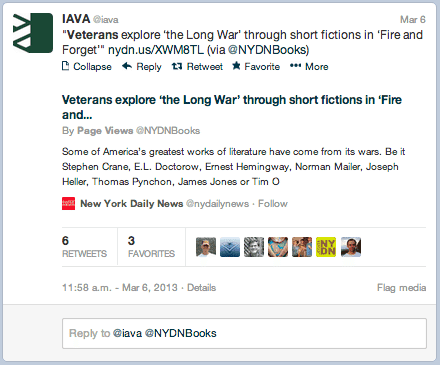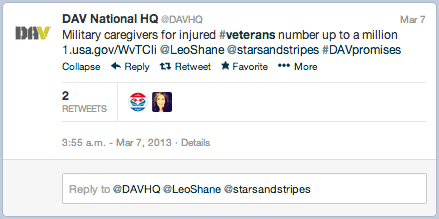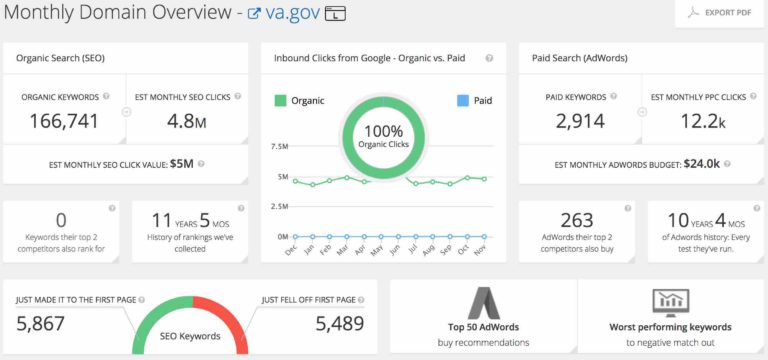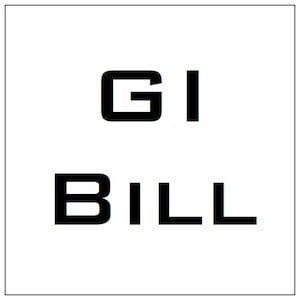VA Could Take 27 Years To Get Rid Of Disability Backlog
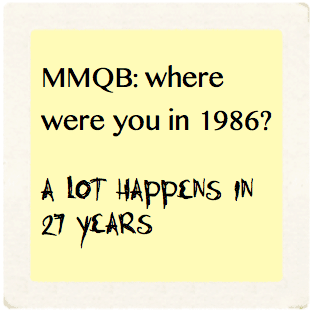
Happy Monday. Hi and thank you for checking in to today’s Monday Morning Quarterback (MMQB).
This is where I take a few minutes to talk about various veterans issues throughout the past week and upcoming hearings.
Here’s the summary of what is going on, and I’ll jump into specifics below.
At the current rate, it will take VA 27 years to dig out of the backlog. 27 years ago, I remember watching the Challenger explode in our school’s library. At today’s rates, had VA started working on the disability backlog back then, it would have finished this past January 27 years. How is that for perspective?
VA is reducing it by .3 percent every month, if the rate holds on what they did last month, we could be in for a very long fix. I’m happy for the few vets who made it through the process, but more needs to be done.
For disabled veterans needing their disability compensation, don’t hold your breath. Plan for your own version of sequestration until the VA gets more funding to hire more staff. Of course, with sequestration, more staff will not be hired.
When it comes to jobs, the government has been one of the largest hirers of veterans. Right now, veteran unemployment has gone down to 6.9 percent. However, this won’t last because the government will not be able to absorb the new veterans into its ranks, as it has in the past.
These veterans will need to rely on the private sector for jobs. Now that VA has finally relaxed standards for veteran owned businesses, maybe these companies will be able to make up the difference. But, with massive spending reductions, government contractors will likely have their own “come to Jesus” moments on spending cuts and hiring.
So, for the veterans needing work, we may be coming on hard times.
That said, it’s time to dig into this week’s MMQB.
I’ll dive into that right after I give a summary of statistics. This is where I dig through what the VA is telling us to see if there is something worth writing about. This week, there was certainly something worth mentioning.
VA Statistics March 2013
Overall, VA disability compensation claims is going down, as are the number of GI Bill claims.
Here is an overview of what the VA did over the past 30 days.
– This week’s tally:
- Disability & Pension: 895,026 Initial + 249,814 Appeals = 1,144,840
– February 4 tally:
- Disability & Pension: 896,999 Initial + 251,327 Appeals = 1,148,329
This means overall initial and appeal claims have been reduced by 0.3 percent.
Initial entitlement claims in my backyard of St. Paul, MN, are also going down:
- 11,820 Entitlement claims were pending last month
- 11,319 Entitlement claims are pending this month
This means St. Paul Regional Office has reduced claims by 4.2 percent, and is thus doing better than the national average for the Dept of Veterans Affairs. Leave it to Minnesota to be leading the pack in some way.
Here is what I think about these statistics and what they “mean.”
I tend to be a “glass is half full” kind of a guy. On the one hand, this is a good sign. Overall, there are 3,500 less claims that are awaiting decisions. This means 3,500 veterans have their claims decided in the nation.
On the bad side, with over 1.1 million initial claims and appeals awaiting decisions on backlog, plus the number of claims increasing, it will take forever to dig out of this problem. At this rate, .3 percent reduction, it will take 27 years for the VA to dig out of its current hole.
In looking at St. Paul RO, with its reduction of 501 in one month, it will take around 2 years. There has been a recent trend where veterans have moved to St. Paul area just for the purpose of getting their disability claims adjudicated in a fair and timely manner. Apparently, the numbers certainly support any claim that the Fort Snelling office in St. Paul, MN, is quicker than the national average.
As you may recall from last week, VA has been slacking on getting the statistics posted on their website in a timely manner. VA is required by mandate to provide information in a transparent manner. It does this through a variety of methods.
Monday Morning Workload Reports is one way. This is an Excel document that summarizes where things are at the beginning of each week. It’s a good resource so long as the VA updates it. Check it out in your spare time if you like looking at spreadsheets.
VA’s ASPIRE system is still showing 7 month old data on health care. I will send a FOIA to the VA to find out when their procedures require them to publish new data.
Sequester May Impact Veteran Unemployment
Washington just released its numbers on veteran hiring and unemployment. Overall, veteran unemployment numbers have gone down.
The numbers dropped to 6.9 percent. This means 772,000 veterans are still reporting that they are looking for work. That number is a dramatic improvement from the 1.2 million veterans who were unemployed, as of 2010. However, the hiring explosion may slow, at least in government jobs.
There are two reason why it is likely that the veteran unemployment numbers are better, aside from the obvious increase in government hiring until now.
First, many new veterans are probably falling off the back end of unemployment after using all their unemployment benefits. Second, veterans unable to find work are possibly using their VA educational benefits, such as the GI Bill, to subsidize living while they seek work.
If the latter is accurate, this is an unfortunate impact of our current stagflation – where the economy appears stagnant but cost of living increases dramatically. Veterans are unable to find work with their current skills and are forced to attend college so that their GI Bill subsidizes their living.
For the former group, (the falling off unemployment due to lack of unemployment benefits) the sequestration will really damage their ability to find work. It’s hard enough to find a job. It’s even harder when you’ve been unemployed for a longer period of time than others.
One thing many analysts forget is that the government is the largest sector employer for veterans for decades. During times of economic turbulence, the government has been relied on to “create jobs” for those who have struggled to find work after sacrificing for the country. For that reason, the cutbacks will likely impact the “new” veterans, too.
According to Stars and Stripes:
Outside experts have predicted the $85 billion in mandatory agency spending cuts will have a devastating effect on the economy.
In his weekly address March 2, President Barack Obama said the funding cuts will cost the country jobs, and not just among government agencies.
“At a time when our businesses are finally gaining some traction, hiring new workers, bringing jobs back to America – the last thing Washington should do is to get in their way,” he said. “That’s what these cuts to education, research and defense will do. … And at a time when too many of our friends and neighbors are still looking for work, it’s inexcusable.”
Republicans and Democrats each have blamed their opponents for the deadlock alternatives to the cuts.
Overall, 2,000,000 veterans are employed by the government. One example of the cuts and how deep they might be is the Dept of Defense. Veterans currently make up 44 percent of the agency’s civilian labor force of 800,000 employees. Mandatory furloughs will put many of these veteran out of work.
Likewise, the VA currently employs 300,000 civilians, of which 30 percent are veterans. Administrative cutbacks will put many of these individuals out of work.
When combined, we are talking about serious numbers of veterans being out to work, at least temporarily. Coupled with the “new” veterans and veterans who are chronically unemployed, we could wind up with another veteran unemployment glut like the one we had just a few years ago.
Since the government is largely responsible for absorbing out of work veterans, veteran owned businesses may become the primary source of future employment for veterans under these tight economic circumstances.
My take on sequestration is that it is a problem that was created by whomever is running our political circus, so I am frustrated that veterans will be shouldered with an increased hardship, relative to nonveterans who did not leave the labor market.
I think this has all the signs of being engineered, and for that reason, I think the American taxpayer should be incensed – both veteran and nonveteran.
Here is way people should be upset if this is engineered by a select few. When problems are engineered, the plan always seems to be: 1) create or find a problem; 2) present our pre-engineered solution. This is a simplified version of the Hegelian Dialectic.
For example, I recall the governmental response to 9/11 being the clearest example of this. Immediately after 9/11, the government presented the Patriot Act, as though it had been created from thin air, in a vacuum, right after the attack.
Later, we learned the Patriot Act was created prior to 9/11 by some think tanks, the intelligence community, and participating groupies of The Project for the New American Century. The Patriot Act allowed draconian erosions of our national liberties in the name of safety. I’ll never forget the words of Bill O’Reilly, “They hate us for our freedoms…” And in the same breath, he said, “We need this Act to keep us safe.” (I am, of course, paraphrasing a little with his quotes).
Now, these companies are making money hand over fist by selling their new “policing” technologies that have been rolled out firs tin the Middle East. Now, we are being pushed to purchase these to police ourselves like a third world country. Since our liberties are practically gone, there are no problems with using drones instead of cops and x-ray machines to search the elderly and small children.
This is shortly becoming the best America taxpayer money can provide.
All these advances were brought to use, or enabled, through the Patriot Act 10 years later.
This time around, I suspect sequestration will reduce American salaries. It will reduce benefits to the poor, elderly, and to our nation’s veterans. Meanwhile, publically traded corporations are recording record highs in their stock valuations. The Koch Bros. win; America loses.
When it comes to jobs, I expect to see veteran unemployment spike again. This is especially likely given that the military will be downsizing over the next years.
Sources:
Individual Unemployment Benefits
On this note, it seems only suitable to discuss the benefit Individual Unemployability.
Individual Unemployability is the easiest way for a veteran to reach a disability rating of 100 percent. As some of you know, the compound disability chart used by the VA does not clearly add up to 100 percent. Instead, VA inserted what many veterans refer to as, “VA Math.” This is where 50+50 does not equal 100. In fact, 80+40 does not equal 100, either.
This math causes many disabled veterans to be stuck in a proverbial “no man’s land” of disability compensation benefits. Many of these veterans are so disabled that they cannot find work. However, due to “VA Math,” they are unable to be classified as 100 percent disabled. Thus, they live on amounts that are close to the poverty level.
The amount of money veterans receive due to their conditions varies dramatically from 100 to 90 percent to 70 percent – we’re talking a difference from $2,800 to around $1,700 – $1,300 per month, depending on the situation and dependents. Most people cannot live on $1,500 per month.
For that reason, Individual Unemployability was created. Veterans can receive what is called an “extra-schedular rating” of 100 percent if their initial disability is 60 percent or higher and the person cannot find substantially gainful employment.
Specifically, a veteran must have one disability rating of 60 percent, or two or more ratings with one being 40 percent or higher with the total being 70 percent or higher.
These veterans may work but they can collect the extra disability only if they make less than the poverty level for one year. A few years ago, the number for the poverty level was just over $9,000 in one year. If the veteran makes more than this, they will have to pay the government back the extra money they received in disability over the entire year. It is a lot of money to pay back, so veterans are encouraged to watch their finances closely.
Once the rating is awarded, the veteran may be required to submit an employment questionnaire.
Source: Veterans Corner: Individual Unemployability Benefits
Veteran Owned Businesses Getting Reprieve From VA
One benefit of the current economic climate is the political pressure on the VA to clean up its act in the area of government contracting. Now, the VA will be loosening the contracting standards for veteran owned businesses, which will allow many of these smaller companies to get work for the government.
While this may be a case of “too little, too late,” the move will help veterans out of work. Since veteran owned business are one of the largest hiring groups of veterans, hopefully this move will help those in need of work actually find jobs.
Here’s a little background. For years, VA has heavily scrutinized veteran owned businesses. The reason had everything to do with fraud. For years, larger civilian corporations were employing veteran owned companies to bid on specialty contracts that were set aside for veteran businesses.
The problem with this is that many of these companies were actual shell companies that only existed on paper. This means the money was basically being funneled to companies that were not really qualified for the task at hand. The practice put “real” veteran owned businesses at a severe disadvantage, by funneling funds away from where the contracts were intended to go.
In response, VA hired a private company to audit all veteran owned businesses applying for “veteran owned business” status. This is the status that allowed them to bid on these specialty contracts I just mentioned.
Unfortunately, by straining the catch a gnat, the VA ended up clogging the process and keeping many veteran owned businesses out of government contracting all together. Many real veteran owned companies were unable to get the certification. Others were caught in a delay that was caused by the audit and gave up.
With the new initiative, VA will allow businesses with small documentation problems to obtain contracts under a temporary provision. Normally, VA would deny these applications out of hand. Then, those businesses would face the year long appeals time and attorney’s costs. Now, they will be able to get a waiver and work with the VA to correct the problems within a matter of days.
Win – win.
Veteran will get jobs and veteran owned businesses will flourish. Maybe they could hire some of these companies as contractors to fix backlog?
Source: American Legion
Conclusion on Veterans This Week
VA should apply its veteran owned business waiver to veterans’ disability compensation. VA could call veterans prior to making a determination to make sure they are rendering their denial of benefits on the correct information. It’s a thought.
We are coming into hard times, but at the current snail’s pace of claims adjudication, veterans and the American public will need to wait 27 years for the VA to clean up its act.
Let’s hope they apply the veteran owned business solution to disability compensation in the near future, too. I don’t think veterans can wait 27 years for the VA to work down its national backlog.
Veterans with severe disabilities may be able to apply for Individual Unemployability to offset their earnings deficits. The only problem with this “plan” is that it takes years to get the benefits a veteran deserves.
Veteran employment numbers are improving, but the unemployment numbers will likely increase again. New veterans will be created during the upcoming downsize of the military. The economy will probably not absorb these veterans in the same way that it has since 2010. The “new” veterans and those who’ve been unemployed for a long time will not have government jobs as a fall back or career goal.
In fact, I would go as far as to say that the federal government has largely been behind the decline in veteran unemployment. However, with sequestration, the government will not be able to continue hiring veterans at the same rate. For that reason, the unemployment numbers will probably increase again, soon.
This leaves it up to small business and veteran owned businesses to make up the difference. Luckily, VA has finally agreed to relax its draconian business auditing process. But this may be a situation of too little too late. Government contracting will decrease along with all other forms of spending.
Top Veteran Tweets
Here are some tweets that grabbed me about veteran and veteran jobs as I wrote this.
